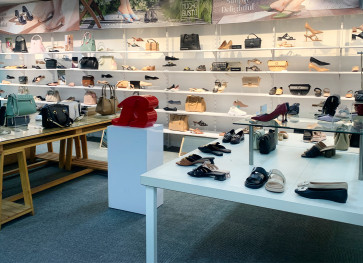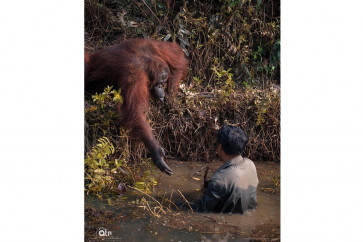Drawn by the macabre in Kutna Hora
Within these walls: From the outside the Chapel of All Saints looks like any other church and graveyard
Change Size
 Within these walls: From the outside the Chapel of All Saints looks like any other church and graveyard. (JP/Linda Hollands)" border="0" height="500" width="375">Within these walls: From the outside the Chapel of All Saints looks like any other church and graveyard. (JP/Linda Hollands)
Within these walls: From the outside the Chapel of All Saints looks like any other church and graveyard. (JP/Linda Hollands)" border="0" height="500" width="375">Within these walls: From the outside the Chapel of All Saints looks like any other church and graveyard. (JP/Linda Hollands)Passing souvenir stores selling an assortment of skull knickknacks, we knew that we were headed in the right direction.
Ahead of us was the archway into the cemetery surrounding the Chapel of All Saints and its ossuary, better known as the Church of Bones.
It is believed that the area was sprinkled with earth from Golgotha, where Jesus was said to have been crucified. According to legend, a corpse buried in the cemetery would decompose within three days and only blanched bones would remain.
The promise of being interred in what was considered holy land while avoiding the lengthy process of gradual decomposition resulted in the cemetery becoming a highly desirable burial place.
Eventually the cemetery became overcrowded and the remains were moved to a crypt to make room for the newly deceased.
In 1870, a local woodcarver was hired to artistically arrange the thousands of bones in the crypt. It resulted in various displays made from 40,000 skeletons. A chandelier containing every bone in the human body hangs over four skull candelabras. Six huge bone pyramids fill the alcoves and there is the family coat of arms of a local aristocratic family that depicts a raven pecking out the eye of a Turk soldier on one part of the shield.
At around noon, tourist buses disgorge hordes of people eager to visit the ossuary, and the reception area where tickets and a few souvenirs are sold can get so full that people all but start using their own bones to elbow each other out of the way.
Giving up and visiting a few souvenir shops down the road proved to be a good idea, for after buying a few skull keepsakes and ornaments with Czech crystal settings, we headed back to the church to find it almost deserted.
Within these walls: From the outside the Chapel of All Saints looks like any other church and graveyard. (JP/Linda Hollands) Passing souvenir stores selling an assortment of skull knickknacks, we knew that we were headed in the right direction. 
Ahead of us was the archway into the cemetery surrounding the Chapel of All Saints and its ossuary, better known as the Church of Bones.
It is believed that the area was sprinkled with earth from Golgotha, where Jesus was said to have been crucified. According to legend, a corpse buried in the cemetery would decompose within three days and only blanched bones would remain.
The promise of being interred in what was considered holy land while avoiding the lengthy process of gradual decomposition resulted in the cemetery becoming a highly desirable burial place.
Eventually the cemetery became overcrowded and the remains were moved to a crypt to make room for the newly deceased.
In 1870, a local woodcarver was hired to artistically arrange the thousands of bones in the crypt. It resulted in various displays made from 40,000 skeletons. A chandelier containing every bone in the human body hangs over four skull candelabras. Six huge bone pyramids fill the alcoves and there is the family coat of arms of a local aristocratic family that depicts a raven pecking out the eye of a Turk soldier on one part of the shield.
At around noon, tourist buses disgorge hordes of people eager to visit the ossuary, and the reception area where tickets and a few souvenirs are sold can get so full that people all but start using their own bones to elbow each other out of the way.
Giving up and visiting a few souvenir shops down the road proved to be a good idea, for after buying a few skull keepsakes and ornaments with Czech crystal settings, we headed back to the church to find it almost deserted.
Passing the ticket seller and descending the stone stairs to the ossuary below ground level, we find ourselves surrounded by bones. They are everywhere ' ahead of us, next to us and hanging over our heads.
The floor plan resembles a cross and the pyramids of skulls stand in each corner. In the very center of the room stand the four candelabras with the chandelier looming over them.
There is also an exhibit case containing skulls with wounds inflicted by a variety of medieval weapons and one wall displays the woodcarver's signature made using finger bones.
Emerging from the lower level, we take the stairs at the side of the building and enter the upper chapel. There are no bones up here.
The altar has a statue of Christ behind it. The narthex has notice boards containing information about the building's history.
Outside, we look up and see two polygonal towers at the western front of the church, where the eternal light of the dead used to burn.
The eternal light may have been snuffed out, but a chilling testimony to life and death remains within the lower confines of the building.
Your Opinion Matters
Share your experiences, suggestions, and any issues you've encountered on The Jakarta Post. We're here to listen.
Thank You
Thank you for sharing your thoughts. We appreciate your feedback.









